- filed under: Risky Play Resources
Risky Play: Why Kids Need It

In my work with teachers I am often asked what risky play is. Risky play is simply a way of organizing observed categories of thrilling play that children engage in when they test their physical limits during unstructured play outdoors.
The term “risky play” is gaining momentum in mainstream teaching and parenting circles due to the abundance of research being published that outlines the social, emotional, and physical benefits of unstructured play outdoors for children.
Risky Play is not Neglect
Risky play is not a specific lesson or activity. Rather, risky play is simply an expression of unstructured play. It means children are taking a personally determined risk that has a potential for physical injury. This in no way implies that the adults who are supervising unstructured play are encouraging or pushing children to take risks beyond what they have already explored. In fact, a good risky play practice requires the adults to be aware of, and make dynamic decisions, to remove or limit exposure to known and emerging hazards from the playscape.
Hazards are Different than Risks
Hazards are different from risks, and practitioners or parents interested in holding space for risky play, should be aware of the age and developmental differences, with their consequences, in their specific play environments. For example: small loose parts, like acorns or tiny stones, could pose a choking hazard for infants and are generally not a concern with school-aged children. To be clear, hazards are more likely to cause an injury and may be unknown to children with a lack of lived experience. It is the responsibility of the supervisory adult to identify hazards and remove or mitigate them. Risks are freely chosen by children once adults have completed a risk benefit assessment.
What is Risky Play?
In sum, risky play is a pedagogical stance. It is a belief that children are capable and competent to make their own decisions about how they use their own bodies when they play outside. As such, a young toddler or pre-schooler will engage with the built or natural environment in a very different way than a pre-teen will. So, worries about young children making dangerous decisions are mostly unfounded in a properly supervised playscape. Because, depending on the age of the child, risks that become hazards in relationship with the developmental and physical literacy skills of the children playing, are removed from the play environment.
Allow Children to Navigate Uncertainty
Children have strong survival instincts, and so are the best judges of their own capabilities, and hovering or taking control of a child’s physical play reduces their ability to make appropriate risk assessments independently going forward. However, I will repeat that supervising adults are important in risky play because they can serve as coaches or mentors to children as they work through their decision making process.
In risky play, children play at the edges of their comfort, without the paralyzing fear of being seriously injured.
Being allowed to make decisions that involve a potential for injury, while having a caring adult in proximity to discuss potential consequences with, allows children to grow in their understanding of how the world works and how to navigate uncertainty, while becoming autonomous and competent decision makers. This makes children safer in the long run because they can potentially assess risks and make decisions when they have had some lived experience to base their choices on. This becomes particularly important in the teen years.
In all cases, a risk-benefit assessment is recommended before facilitating any sort of risky play. A free risk-benefit assessment toolkit is available from Outdoor Play Canada here.
What is Unstructured Play?
Unstructured play outdoors almost always has elements of risky play embedded in the experience. In unstructured outdoor play, children are free to choose how, where, and what they play. They are equally free to quit or abandon the group play as they wish, without consequence. That means, any game or activity that is adult directed, has rules determined by adults, or has winners or losers, is no longer considered unstructured play. This is important because, within the confines of various games or lessons teachers organize outdoors, children may drift away to engage in thrill-seeking unstructured play outside of the scope of the prescribed activity or lesson.
All teachers have seen this happen, and the skill of facilitating risky play is to appreciate the benefits of giving up some control over how kids play and how they move their bodies. In response, many teachers are moving towards unstructured lesson planning altogether in favour of allowing meaningful learning to emerge authentically. You can learn more about how teachers across Canada implement this pedagogical approach with the teacher.outsideplay.org tool here.
This blog is full of ways to harness the educational potential of unstructured play within a framework of an emergent curriculum. I also offer keynotes, professional learning series, and workshops on what unstructured and risky play looks like in the K-7 school context.
Categories of Risky Play
There are many ways children engage in risk taking during unstructured play, and when you think about joyful ways children have played outdoors in your context, you have likely seen all of these categories of risk emerge. The categories exist simply as observational tools and are constantly growing alongside the research in this field. Categories of risky play help us better understand why children are playing the way they play, and what sort of thrill they may be seeking.
The architect of familiar categories of risky play is Dr. Ellen Beate Sandsetter, a Norwegian researcher who observed children’s outdoor unstructured play and began to make sense of the ways children were thrill-seeking in their play. Dr. Sandseter’s original 6 findings were published in 2007 and our understanding of the field continues to grow. You can read more about the professional identities of teachers who enact risky play as a pedagogical framework for education outdoors here.
1. Play with Height
Play with heights includes climbing, jumping from or over heights, hanging and dangling from heights, as well as balancing over any variety of heights. The known risk of physical injury when playing with height is from falling. Read more about what risky play can look like in the school context here.

2. Play with Speed
Play with speed includes sliding, spinning, running, and swinging. Play with speed can also include specific equipment for increasing play with speed, like skis, sleds, or bicycles. The use of safety equipment, like helmets, can reduce the risk of injury, which includes potential collisions or falls.
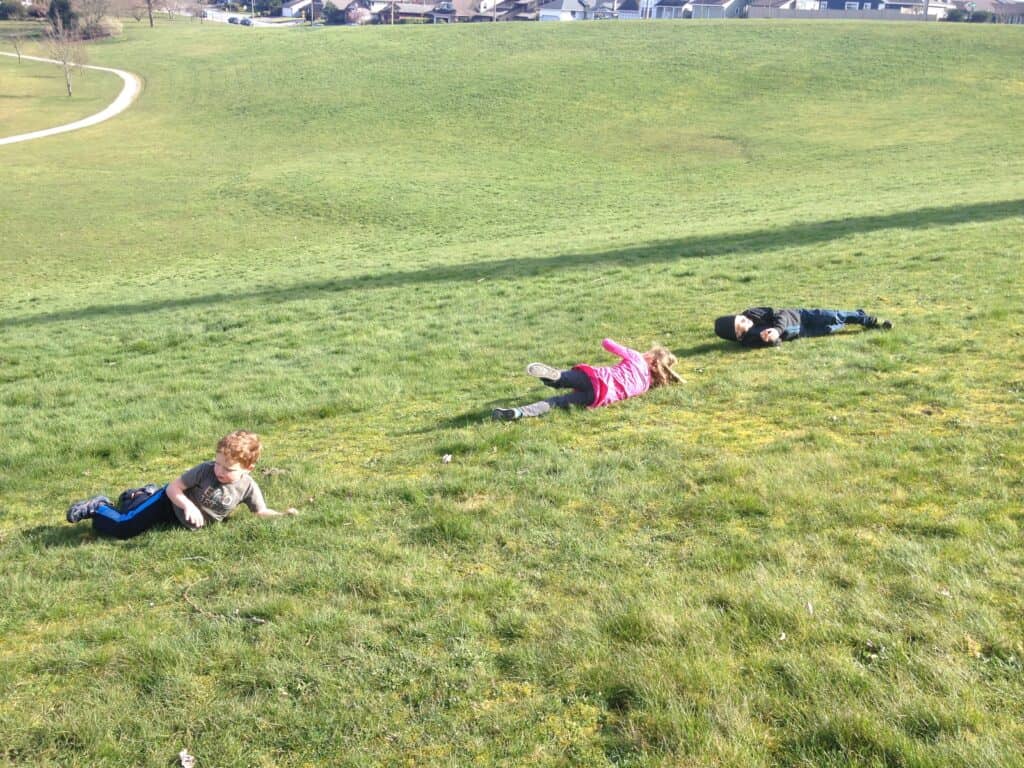
3. Play with Tools
For generations, the use of tools was a rite of passage and a normal part of any child’s growth and development. Somewhere along the way, perhaps because of our focus on academics over trades, the use of real tools for real work has become an all but rare occurrence in most children’s daily lives. Risky Play with tools includes the use of saws, hammers, knives, and other applied design tools used in construction or crafting. Facilitation by a skilled and knowledgeable teacher is essential, and direct instruction on how to use tools appropriately is critical. Read a full blog post on what risky play with tools can look like in a school setting here.
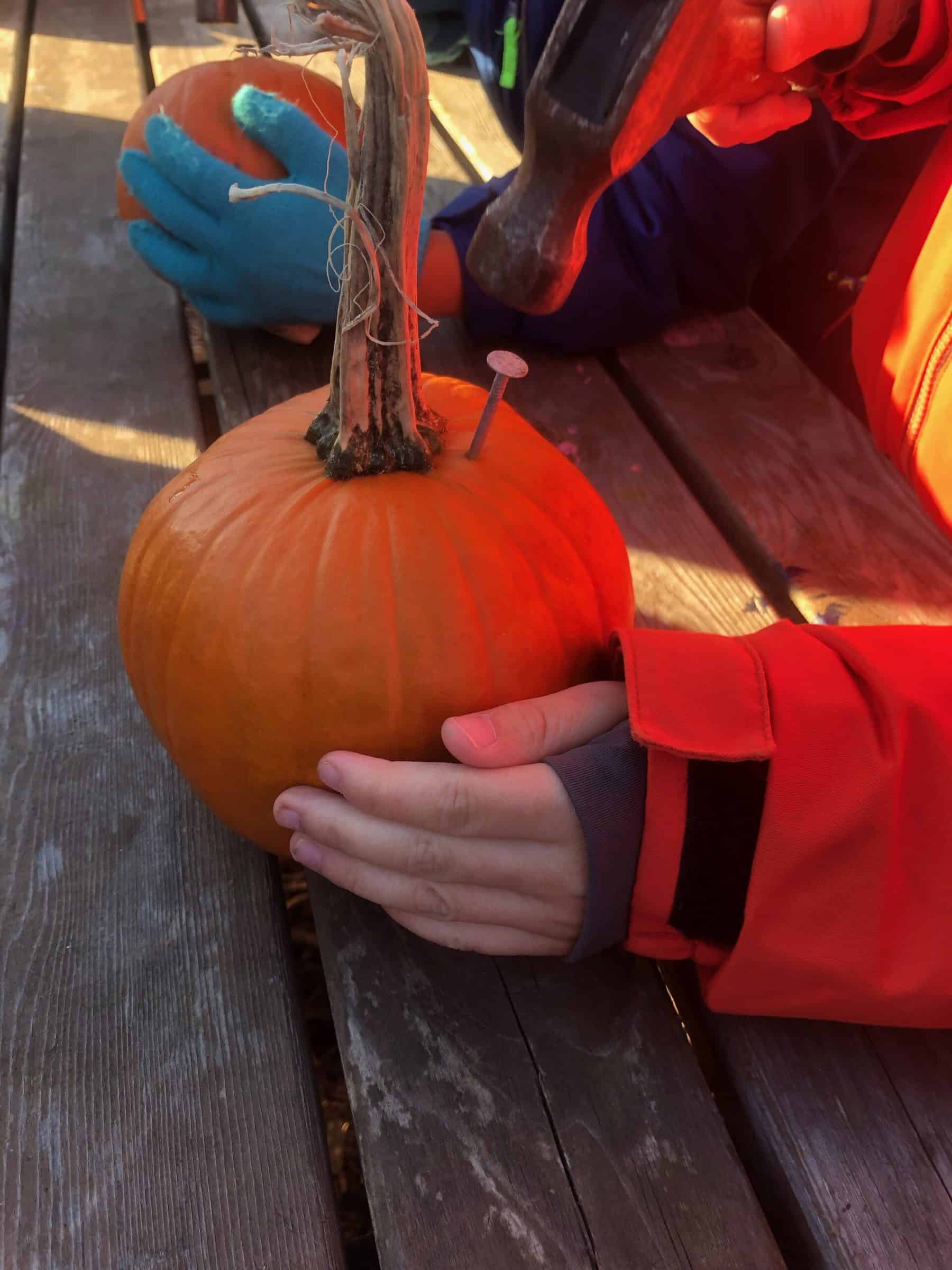
4. Rough and Tumble Play
Rough and tumble play includes play fighting, hitting and sword fighting with sticks, wrestling, dragging and pushing games invented by children. This is one of the least common categories of risky play to observe in schools, and yet one of the most important for teaching children what consent looks like and feels like.

5. Play with Elements
Play with elements includes play with or near potentially dangerous elements like fire, deep or rushing water, steep terrain, or seasonal hazards, like ice or snow. Facilitation by a skilled and knowledgeable teacher is essential, and direct instruction on how to navigate hazards is critical.

6. Play With A Chance of Being Lost
As educators we simply do not have the luxury of letting our students “get lost”, but we can prepare environments where children feel they are playing out of our direct supervision. We have a professional obligation to ensure our students are technically under our supervision at all times, but strategic landscape design and intentional structures that allow children to feel they are sheltered from adult supervision can still be very thrilling.
Read a full blog post on how a foggy morning presented a fantastic opportunity to allow children to have a sense of solitary exploration, with the temporary thrill of imagining they were lost- without the real world consequences here.
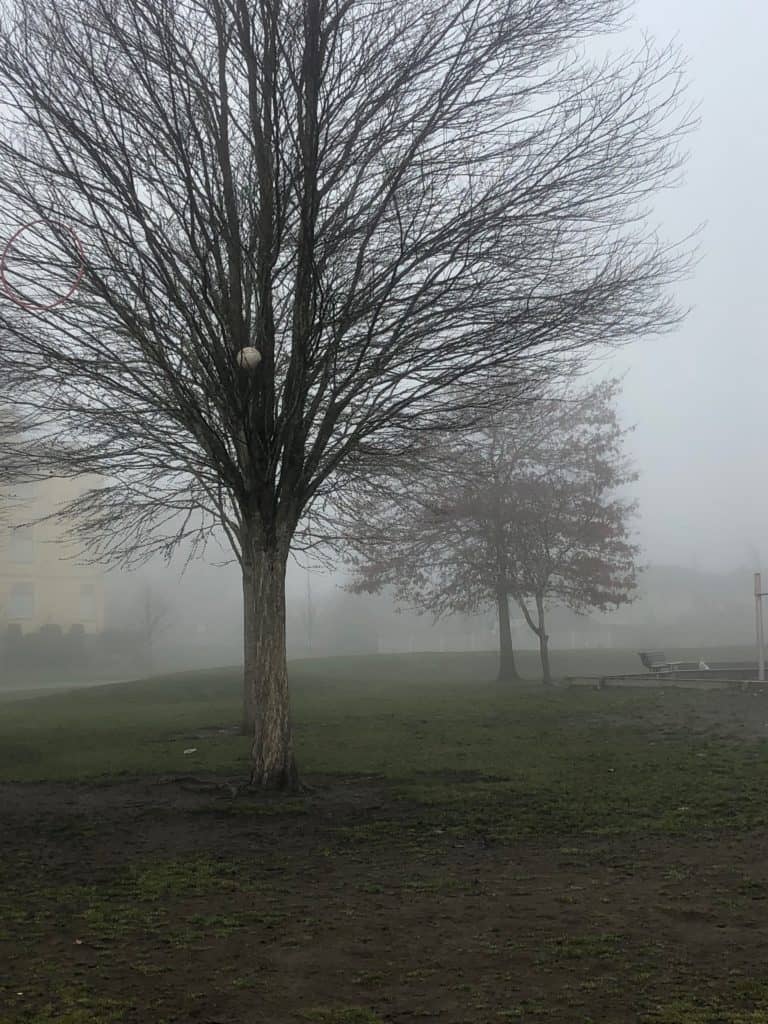
7. Play with Impact
Play with impact includes thrill seeking from repeatedly hitting, striking, dropping or smashing objects, like snow or ice. In young children his can include riding a tricycle into a wall, and in older children it can include hitting a log with a stick repeatedly or intentionally belly flopping into water!
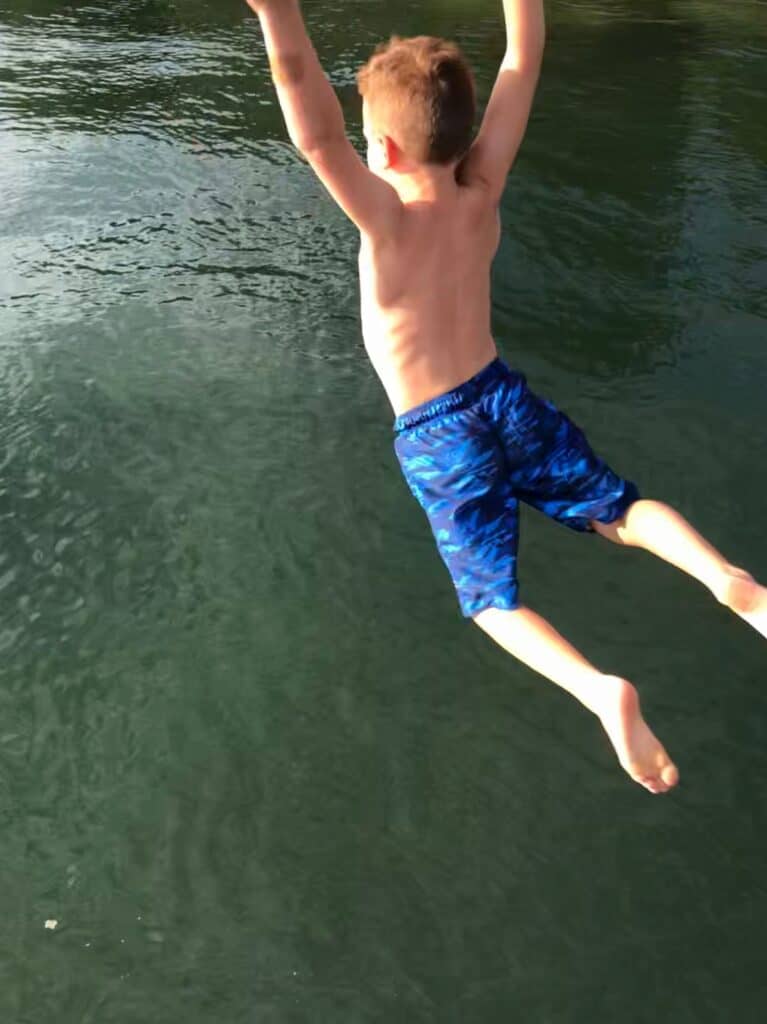
8. Vicarious Play
Vicarious play includes any kind of thrill achieved from watching other people engage in risk taking. Everyone has had the experience of sweaty palms or excited anticipation while watching someone else take a risk we were in no way qualified or interested in taking. For me, this happened when I watch the Olympics!
9. Construction Play
Construction play includes the thrill of building structures or obstacles that are stable or unstable. This category often weaves in other known categories of risky play, like shelter (hidden) play and tool play. Construction play includes play with large and small loose parts, and often results in story play with complex narratives
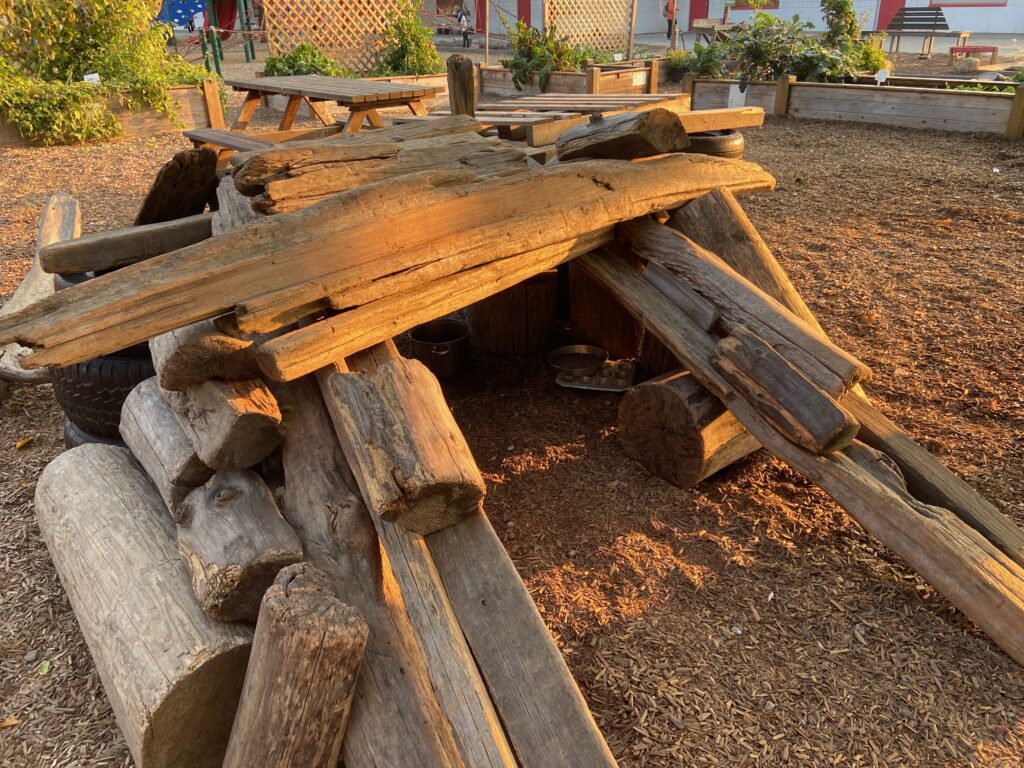
10. Breaking Rules
This category of risky play requires no explanation! Children will often experiment with boundaries and breaking rules, particularly when playing in spaces that no longer offer novelty. This category of play requires teachers be clear on which rules are non-negotiable and which can be situational. For example, throwing snow might not be allowed during recess because there isn’t enough supervision and too many kids are trying to play in a small area. However, during class time, teachers may take their class outside and allow them to throw snow when they are the only children on the field. You can learn more about how to co-create YES spaces in the teacher.outsideplay.org tool here.
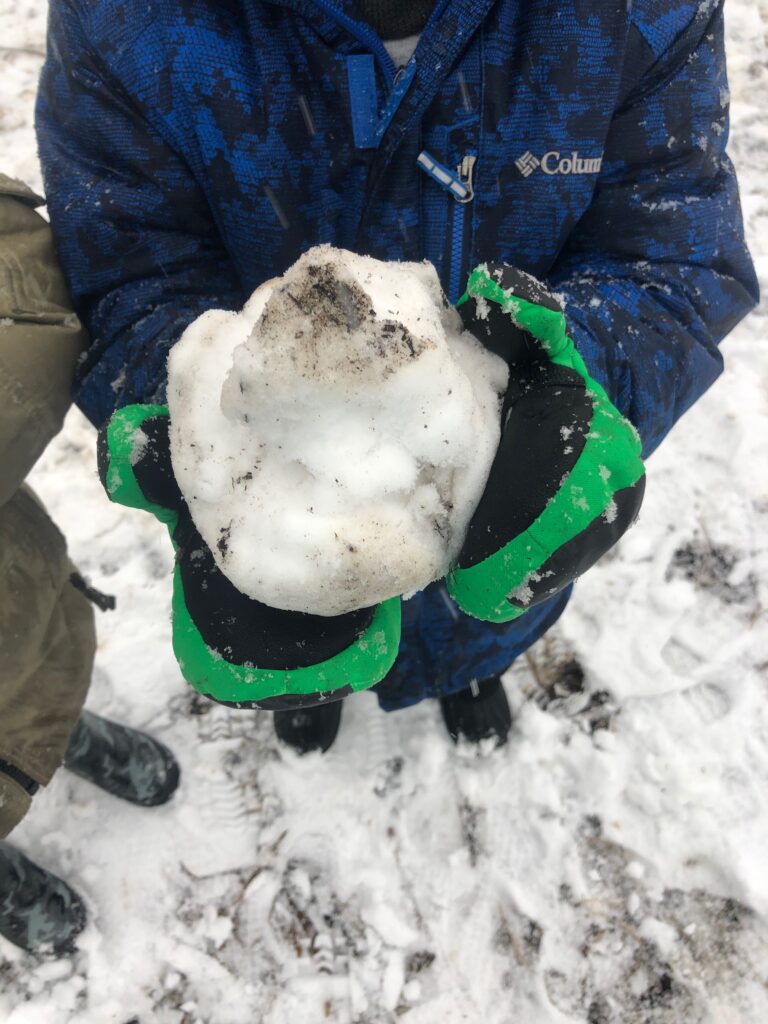
Risky Play Resources
In response to repeated requests for resources, this post lists high quality risky play resources for both families and educators. Check them out below!
Learn More about Risky Play
Adults are understandably nervous when they read about, or hear discussions, that call for a greater freedom and agency when children are left to make their own risk assessments. Concerns about liability, particularly when caring for other people’s children, and fears of judgment are top of the list of reasons why adults restrict children’s access to unstructured and risky play.
From my dissertation research, the teacher.outsideplay.org tool was developed by and for teachers. Sixteen modules are nested with four thematic areas identifies as important for supporting teachers. The tool is entirely free for teachers and includes a fulsome speaker series and access to curated free resources.
These infographics were created by the Child & Nature Alliance of Canada to support parents and caregivers as they navigate risky play with their children.
For parents and caregivers who fear the worst and need reassurance that the benefits of unstructured play outdoors outweigh the potential risks associated, I recommend this risk re-framing tool developed by leading researchers at the University of British Columbia and BC Children’s hospital. Link to OUTSIDE PLAY.CA
For educators or policy makers looking for resources that include position statements and infographics with data on risky play’s benefits, check out the many resources complied on the OUTDOOR PLAY CANADA website. Outdoor Play Canada is a network of leaders, organizations, and researchers advocating for increased access to outdoor play in Canada.
For anyone looking for easy to share and easy to understand infographics, research summaries, decision making tools, and more, check out the multiple resources on the CANADIAN PUBLIC HEALTH ASSOCIATION‘s website.
The Nature of Things aired an episode on the power of play. You can watch THE POWER OF PLAY here.
Here is a blog post I wrote on GREAT BOOKS FOR INTRODUCING LOOSE PARTS PLAY OUTDOORS.
More Resources for Risky Play:
